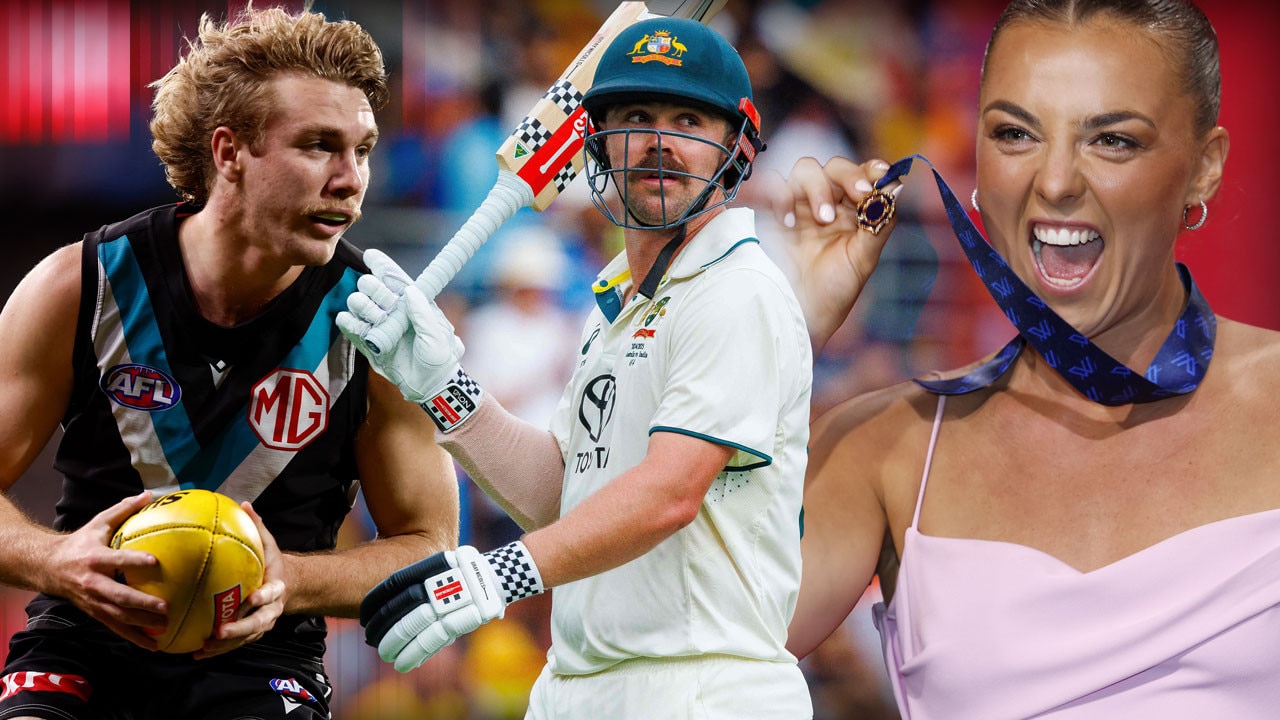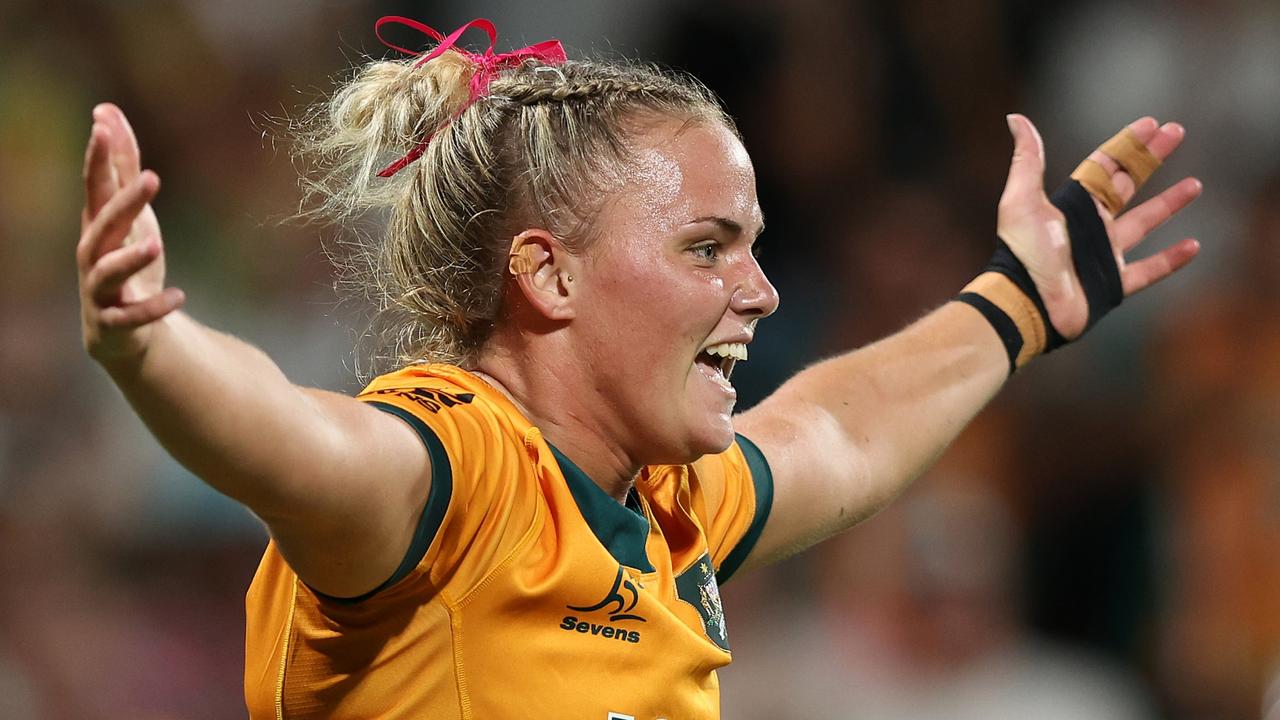Jessica Halloran: Why female footy star Taleena Simon chose sport over drugs
ROOSTERS player Taleena Simon grew up kicking a footy in The Block. She saw the effects of drug and alcohol addiction on people close to her. But as others succumbed, she reveals to Jessica Halloran why she chose sport.
Women's sport
Don't miss out on the headlines from Women's sport. Followed categories will be added to My News.
TALEENA Simon grew up kicking a footy in The Block.
She’d often hang out at Tony Mundine’s old school gym training with a bunch of other local kids.
The Roosters footballer “loved” her Redfern childhood. She remembers it being a fun, sporty time, playing basketball and OzTag, surrounded by family, but there were pitfalls.
She saw the wretched effects of drug and alcohol addiction on people close to her. But while others succumbed, she chose sport.
“For me, I wasn’t easily ‘peer pressured’, I had my focus just on sport,” she says.
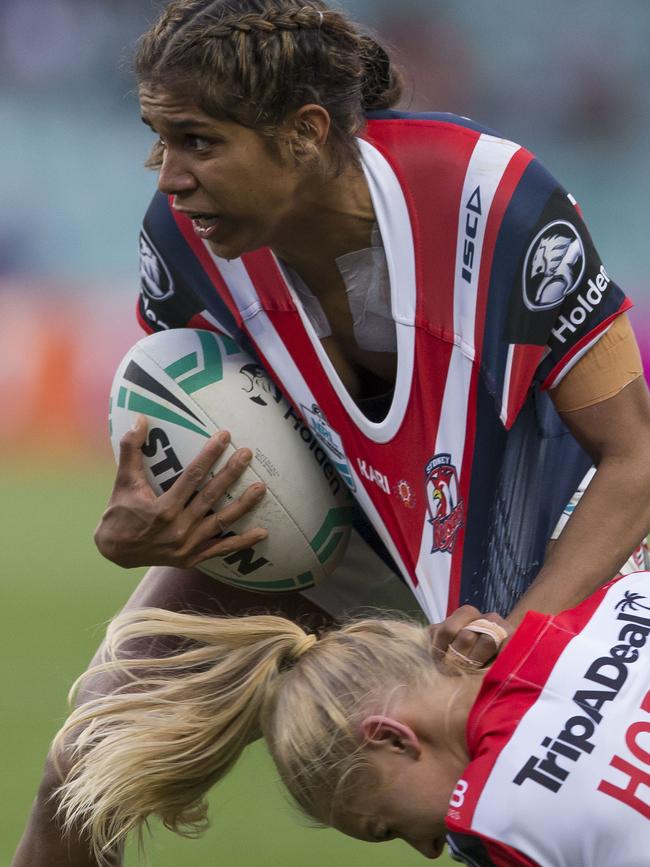
“There was a lot of drugs, alcohol around The Block when I was growing up, but I just kept my focus on footy … some of my family and friends were affected by drugs and alcohol.
“I didn’t want to be like that. Just seeing them like that made me stay away from it.”
Simon has become one of the stars of the NRLW; a disciplined, brilliant athlete with a firm message for little girls who now idolise her.
“No matter where you come from, you can make something of yourself,” she says.
Simon always loved rugby league but had no idea she could play it competitively until she was 13. That day came in 2003 when she sat in the crowd at the Koori Knockout competition and saw women playing league for the first time.
Within a year, at 14, she’d made the Waterloo Storm team and took the field in the Koori Knockout. Her talent was undeniable. She ascended the rugby league ranks, played for Redfern All Blacks, Guildford Owls, then at 21 she was the first Aboriginal woman to receive a full-time professional contract with Australia’s Rugby Sevens program.
After two years, and a shoulder injury, she left rugby.
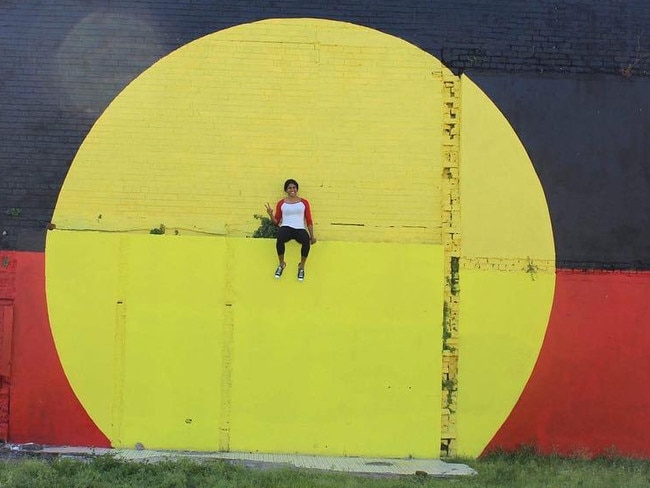
But her time in a professional environment saw her markedly improve her skills and she was snapped up by the Roosters for this season.
The first time she pulled on a Roosters jersey she was awe-struck.
“Oh mate, it was pretty exciting,’’ she says.
“I was freaking out. I never thought I’d get an opportunity to put on an NRL jersey. I could only dream about it at a young age.”
She scored four tries last weekend and today Simon will play in the grand final against the Broncos.
When Roosters football manager Craig Walker called her up the other week to tell her she was nominated for the Dally M, she was dumbstruck.
“What the hell? I am confused,’’ she says.
ALL GROWN UP: Zahara Temara thriving with Roosters
RISE UP: Ali Brigginshaw goes from no lights to bright lights
“Why did I get nominated?”
Simon isn’t playing for the accolades but, what she is playing for, is the future of the game.
“I want to try to do the best I can, to promote the game, and to do that you’ve got to put on a good show, to try to build the way for the young girls,” Simon says.
“Because it’s not just about us you know, it’s bigger than us.”
That it is. About 75,000 people have turned up to watch the women play in the inaugural NRLW and there’s been a cumulative TV audience of 1.1 million.
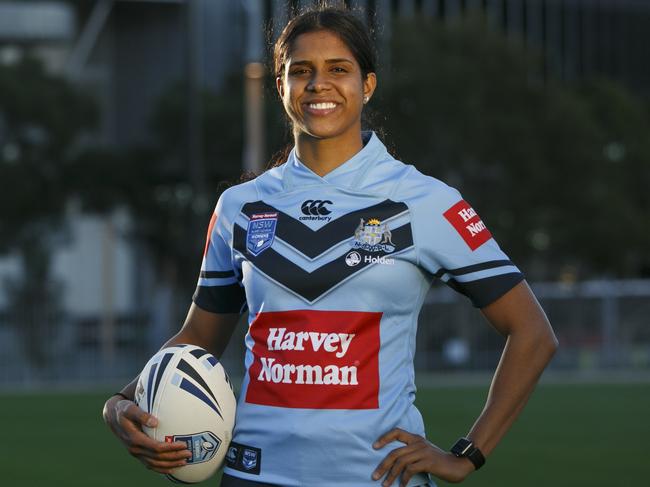
Before this, in June, the women’s Origin was a monumental success. That breakout game received the honour of ‘Headline Moment of the Year’ at the Dally M Awards. The respect and goodwill from within the rugby league community shown towards the NRLW has been heartening.
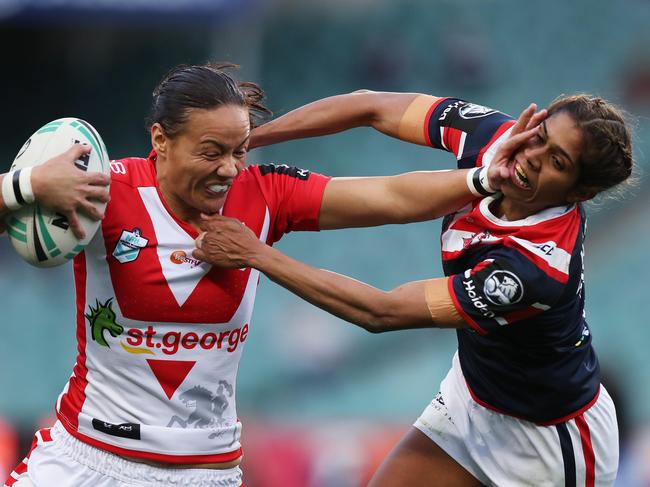
When women started playing AFL at an elite level, a column was written by ex-footballer Graham Cornes stating women “just didn’t look right” playing and their uniforms weren’t “flattering”. Collingwood president Eddie McGuire was a no-show at his women’s team first game against Carlton — hosting a Green v Mundine bout instead.
Just a few days ago, premiership-winning coach Mick Malthouse said during a sports function that AFL was a “man’s game” and suggested female players should be playing under a different set of rules to reduce injuries.
One of the faces of AFLW, Moana Hope, walked out of that function feeling “humiliated and disgusted”.
GAMEBREAKERS: Who can blow the grand final wide open
PLAYER PROFILES: Broncos’ and Roosters’ teams 1-17
In the NRL, there’s been none of that (so far, so good) and there’s real feeling of inclusiveness around the women’s competition.
The NRL will continue a consultative approach with players, stakeholders and clubs as it seeks to improve the competition next year.
“In the long term, we want to see this move from semi-professional and into professional,” NRL general manager women’s elite programs Tiffany Slater says.
Simon, like many others, hopes one day a women’s competition will be a career option. “Sooner or later, hopefully, it will lead to a full-time job,” she says.
Originally published as Jessica Halloran: Why female footy star Taleena Simon chose sport over drugs

